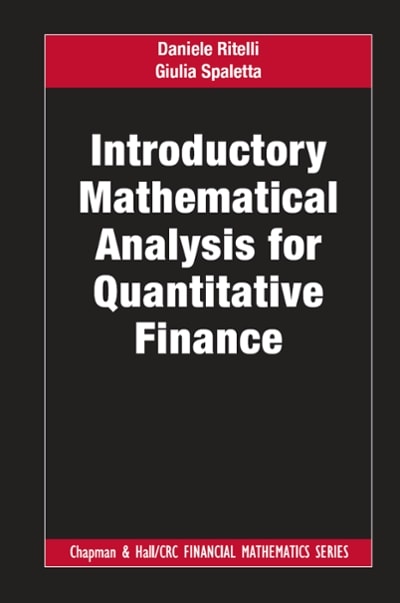Question
a. Consider the following autoregressive process: Is this process covariance stationary?[5 marks] b. Consider the process: Can this ARMA(1,1) process be expressed as an AR
a. Consider the following autoregressive process:
Is this process covariance stationary?[5 marks]
b. Consider the process:
Can this ARMA(1,1) process be expressed as an AR process?If so, give the first four terms of the equivalent AR process. [15 marks]
c. Suppose that we had data on the CLP: GBP exchange rate and applied the Augmented Dickey-Fuller test.When testing for a unit root against the alternative of a constant mean we find that we cannot reject the null at the 10% level of significance.When testing for a unit root against the alternative of a deterministic time trend we find that we can reject the null at the 5% level of significance but not at the 1% level of significance.
What would be your conclusion as to the stationarity of the exchange rate series?What implications would this have for the further analysis of the series? [15 marks]
d. Suppose that we have the following estimated distributed lag model:
where y is the weekly change in the three-month interbank lending rate in Canada and x is the weekly change in the three-month interbank lending rate in the USA, both measured in percentage points, and numbers in ( )are the standard errors.
Suppose that both y and x are covariance-stationary.
i)Under what conditions would OLS estimation of this model be consistent?Do you think these conditions would be satisfied?[5 marks]
ii)If the change in the USA three-month interbank lending rate were to increase by one point, what would be the expected effect on the change in the Canadian three-month interbank lending rate?[5 marks]
iii)Outline appropriate tests for serial correlation and heteroskedasticity with respect to the residuals of this regression.[5 marks]
iv)What would be the consequences of error serial correlation and heteroskedasticity in the context of this model?[5 marks]
Suppose that you applied the tests outlined in iii) above and concluded that serial correlation and heteroskedasticity were present.What adjustments would you make to the model and/or estimation?[5 marks]
Step by Step Solution
There are 3 Steps involved in it
Step: 1

Get Instant Access to Expert-Tailored Solutions
See step-by-step solutions with expert insights and AI powered tools for academic success
Step: 2

Step: 3

Ace Your Homework with AI
Get the answers you need in no time with our AI-driven, step-by-step assistance
Get Started


